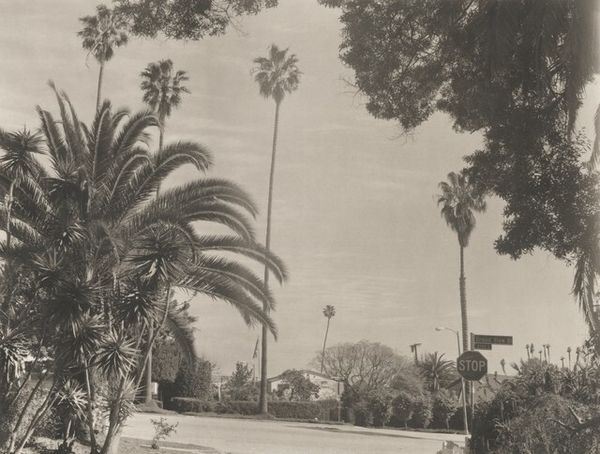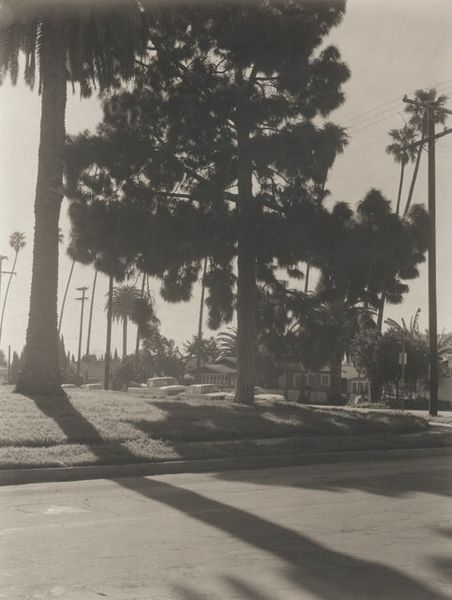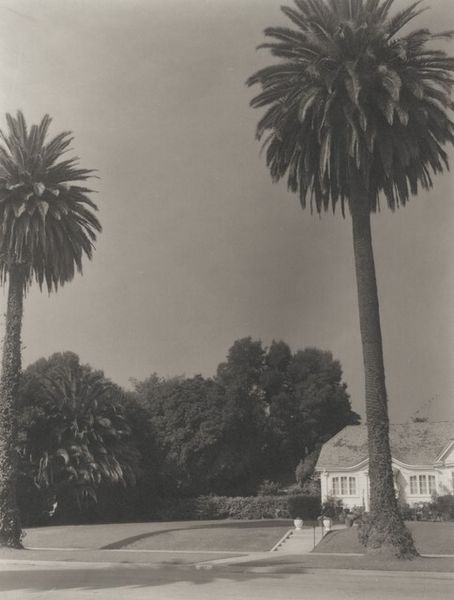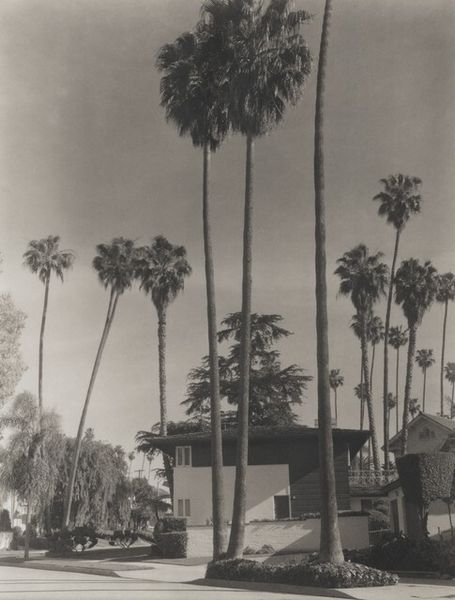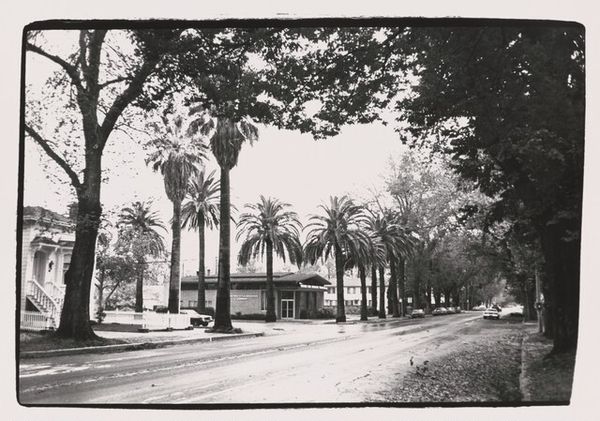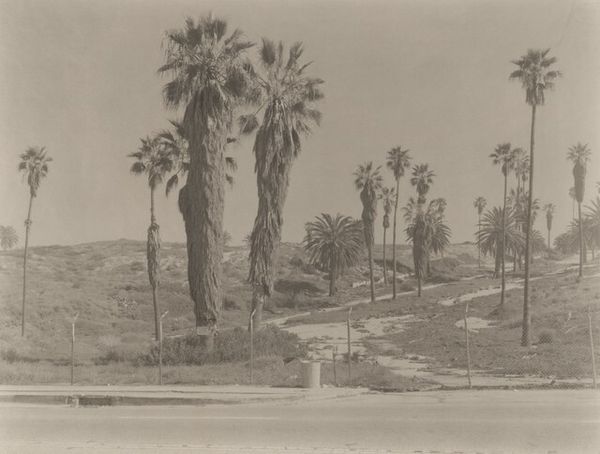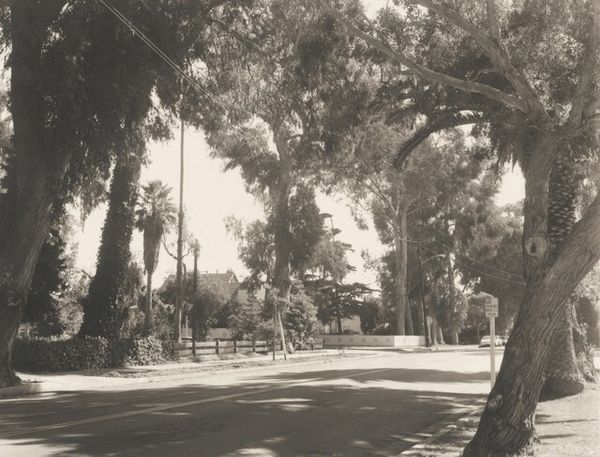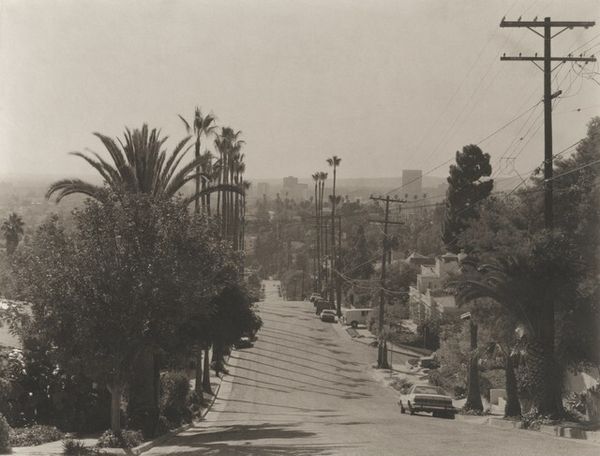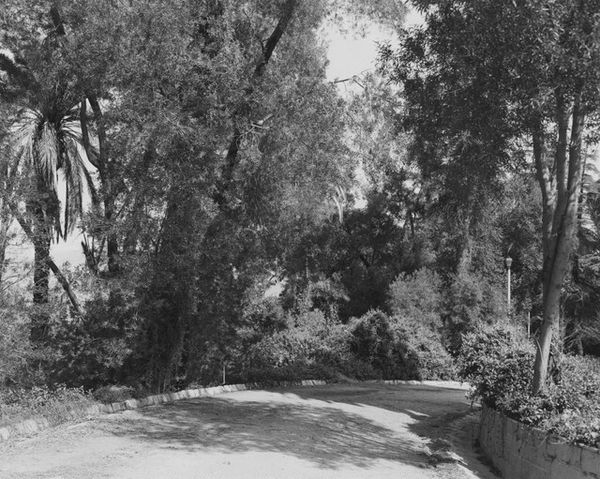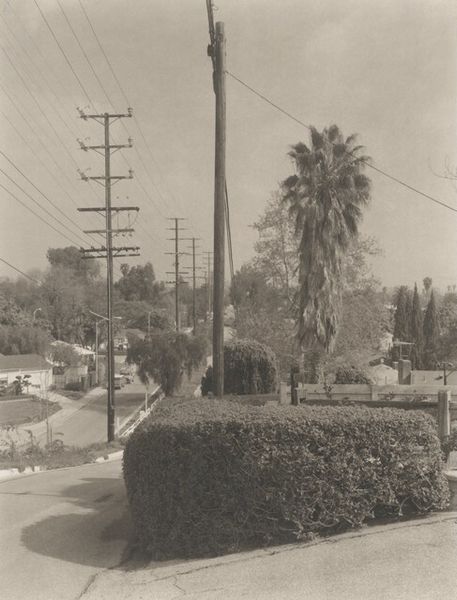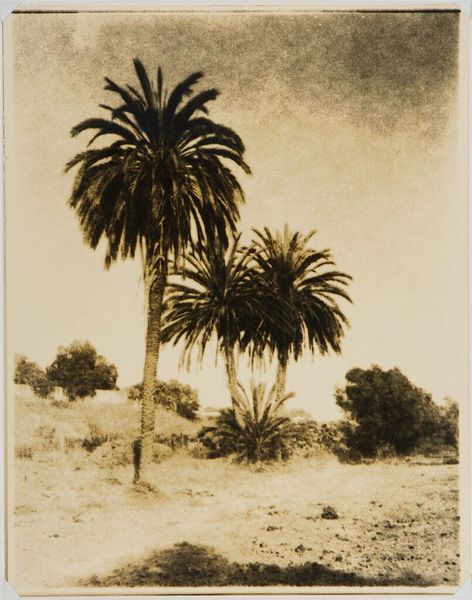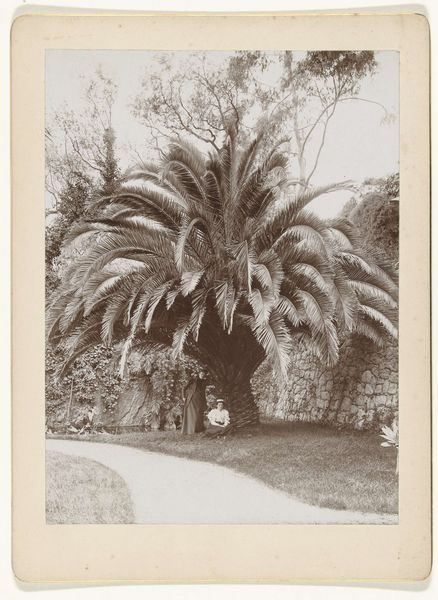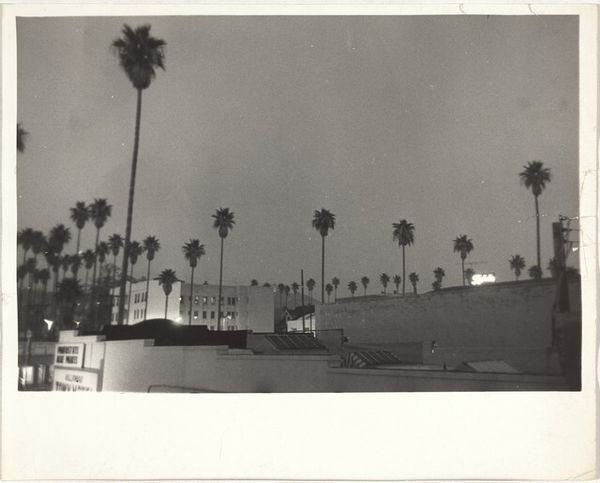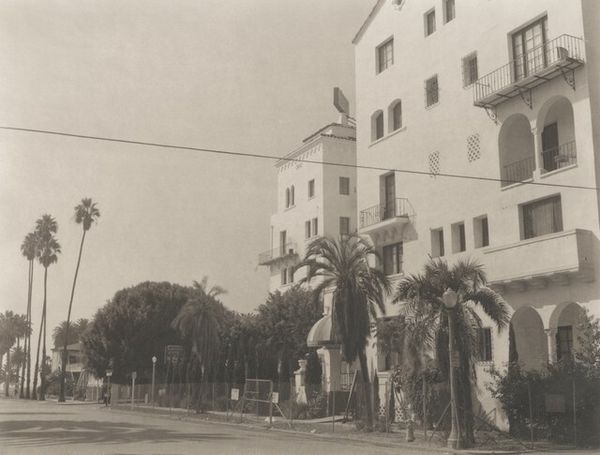
photography
#
black and white photography
#
landscape
#
street-photography
#
photography
#
black and white
#
monochrome photography
#
outdoor activity
#
monochrome
#
modernism
Dimensions: image: 34 × 25.9 cm (13 3/8 × 10 3/16 in.) sheet: 42.6 × 35 cm (16 3/4 × 13 3/4 in.)
Copyright: National Gallery of Art: CC0 1.0
Curator: So evocative! Georgina, Santa Monica, a photograph taken by Madoka Takagi in 1995. The date situates it interestingly, near the close of the twentieth century but with a clear, modernist visual language. Editor: The first thing I notice is the stillness. Despite being an outdoor scene, a street scene even, there's this incredibly serene, almost meditative quality to the black and white. It's an avenue of palms, a street seemingly captured at noon and cast in long shadows. Curator: Indeed, and Takagi is engaging with several historical photography traditions here. We have street photography but presented in a formally composed, almost architectural manner reminiscent of earlier modernist approaches to urban space. The social aspect of "street" life feels somewhat muted; we are given more a sense of space and environment instead. Editor: The palm trees become these monumental figures, almost totemic. Palms are classic symbols. Their association with warmth, paradise, with an easy, perhaps illusory, life… This almost overwhelms the reality of an everyday street, and the shadow play creates strong graphic forms. It's striking how universal this avenue of palms can be and how linked to Southern California's aspirational iconography. Curator: Right, the photographic processing choices enhance this reading, moving beyond pure documentation. Consider the graininess of the image and the tonal range achieved solely with black and white to invoke the sense of longing often associated with place making and identity formation, prevalent through history. It shows California but it's not explicitly selling the location. There is commentary perhaps on a placid and well curated reality. Editor: And that lack of explicit 'selling' allows viewers space. Space to breathe, to consider. Maybe the trees serve almost as a visual code - signifying much more than what they literally are. This symbolic language is always shifting; this scene feels removed from the day-to-day hustle while clearly showing that the day-to-day hustle does go on. The light in black and white holds the street both separate from the world and central to a particular memory and mood. Curator: It encourages thinking about the constructed nature of places and their inherent projection onto ourselves as inhabitants of this world. We reflect on memory as something curated, like these very scenes of life depicted to emulate and recontextualize. Editor: Precisely! So, it's a photograph about much more than palm trees and streets. It is more like an invitation to explore how the mundane attains symbolic meaning, how our perception creates the stories our locations are meant to display, but even deeper into our humanity, in this moment, than at any other angle or moment.
Comments
No comments
Be the first to comment and join the conversation on the ultimate creative platform.
